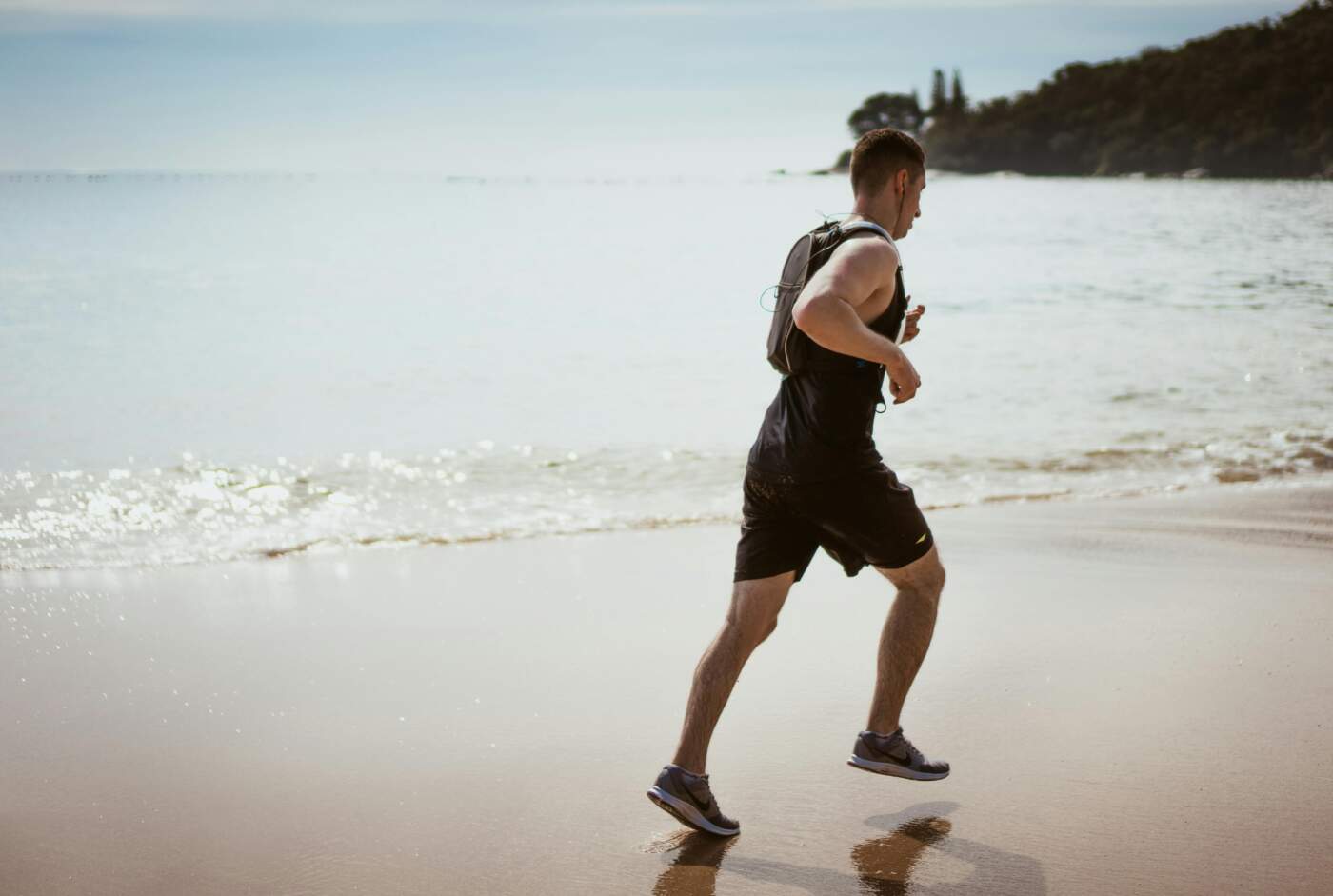Lacing up and hitting the pavement for a run is great exercise. It can also be therapeutic, reducing your stress levels and increasing the quality of your sleep, among other benefits.
But because of the repetitive impact of running, it can also be hard on your body. Many people wonder if running hurts their knees, especially.
This article investigates that question, finds the answer, and shares how to take care of your knees when you run.
Is running dangerous for your knees?
Running isn’t bad for your knees; Running with poor form is bad for your knees.
In fact, most knee injuries caused by running are overuse injuries, meaning you’re putting more stress on your body than it can handle.
Whether it’s ramping up your training schedule too quickly or not getting enough rest between runs, running too many miles before your muscles, bones, joints, and cartilage are ready for more can increase your risk of injury.
What Science Says Quite a few studies have investigated the effects of running on the knee (1).
One study followed long-distance runners as well as a nonrunner control group for 18 years. For nearly two decades, researchers have monitored the presence of osteoarthritis in the knee through multiple x-rays. The study results showed that running was not associated with more prevalent osteoarthritis in healthy older adults. In fact, at the end of the study, 20% of runners showed signs of osteoarthritis, compared to 32% of nonrunners (2).
Another study suggests that running can be beneficial for the knee. The researchers used gait analysis and computer modeling to confirm that more weight falls on the knees than when walking. Still, it makes the knee bone and cartilage flexible, potentially making the knee stronger overall (3).
And if you already have knee pain? Running completely off the table for you? The research necessarily says so.
A recent study with 82 middle-aged volunteers looked at the short-term effects of long-distance running on the knee joints using magnetic resonance imaging (MRI).
Pre-training MRIs showed signs of asymptomatic damage to knee structures in most participants. After the marathon, MRIs showed decreased tibia and femoral bone loss. However, MRIs have also shown degeneration of the patellar cartilage (4).
What does this all mean? Don’t give up running because you’re afraid it might cause knee pain. But, as with every activity, listen to your body. When pain occurs, investigate why it might be happening.
Variables that can make running harder on your knees
However, there are a few variables that can run hard on your knees. These include:
Bad form- Good running form is complex and subtle, but the basics are looking forward and keeping good posture at a 90-degree angle and keeping your arms and strides quick with a mid-foot strike. If you hit the ground with your heel, you tend to get knee pain.
Bad shoes- Especially if you run long distances, finding shoes that fit your gait and feet is key. Factors such as cushion level, arch support and running shoe width are important. If you are able, visit a local running store and get your feet properly fitted.Rigid surfaces- Many people find running on soft surfaces like grass or a treadmill better than running on asphalt or cement. Running is high impact, and studies have shown that soft surfaces like wood chip trails can reduce impact on the tibia — and thus the knee (5).
warning
If you feel any pain around the knee — above, below or behind the knee — while running, your body is trying to tell you something. Whether the pain is dull or sharp, the best course of action is to stop running and rest.
Some common knee injuries in runners include:Runner’s knee. this condition usually manifests as pain in front of the knee or around the knee when you run. This is caused by stress between the patella (your knee cap) and the femur (your thigh bone), causing the cartilage to become irritated (6).
IT band syndrome. If your outer knee is bothering you, you may have iliotibial band (IT band) syndrome, which occurs when the IT band—a long tendon that stretches from your hip to your outer knee—is too tight (6).
Jumper’s knee. Also known as patellar tendonitis, this condition is caused by an inflamed patellar tendon, which connects your knee to your shin. You will feel pain in the front of the knee (7).
Bursitis. If you have knee bursitis, you’ll experience inflammation and swelling in one of the small, fluid-filled sacs called bursae in the knee. It may manifest as a swollen mass on the front of the knee (8).
If the knee hurts while running, stop running and apply ice to the area. If your knee pain doesn’t go away after a few days of rest, see a doctor to get it checked out.
A few tips to protect your knees while running
In addition to running with proper form and wearing the right shoes, there are a few other things you can do to protect your knees while running:
Start slowly and conservatively. Avoid going too hard, too fast. Your body needs time to adjust to the new stress. Many long-distance runners follow the 10% rule, which states that your weekly mileage should not increase by more than 10% week over week.
Stretch before and after running. If your muscles are tight, you’re more likely to run with bad form and injure yourself. Before you run, do some dynamic stretching, then, try some static stretching.
Consider compression sportswear. For example, wearing knee sleeves while you run can provide some extra support to an unstable knee.
Bottom line
Don’t let the fear of injuring your knee stop you from running. By taking the proper precautions — strength training, stretching, wearing the right gear and being conservative in your training — the benefits of running can outweigh the risks.




Leave a Comment